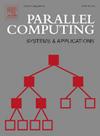A GPU-based hydrodynamic simulator with boid interactions
Abstract
We present a hydrodynamic simulation system using the GPU compute shaders of DirectX for simulating virtual agent behaviors and navigation inside a smoothed particle hydrodynamical (SPH) fluid environment with real-time water mesh surface reconstruction. The current SPH literature includes interactions between SPH and heterogeneous meshes but seldom involves interactions between SPH and virtual boid agents. The contribution of the system lies in the combination of the parallel smoothed particle hydrodynamics model with the distributed boid model of virtual agents to enable agents to interact with fluids. The agents based on the boid algorithm influence the motion of SPH fluid particles, and the forces from the SPH algorithm affect the movement of the boids. To enable realistic fluid rendering and simulation in a particle-based system, it is essential to construct a mesh from the particle attributes. Our system also contributes to the surface reconstruction aspect of the pipeline, in which we performed a set of experiments with the parallel marching cubes algorithm per frame for constructing the mesh from the fluid particles in a real-time compute and memory-intensive application, producing a wide range of triangle configurations. We also demonstrate that our system is versatile enough for reinforced robotic agents instead of boid agents to interact with the fluid environment for underwater navigation and remote control engineering purposes.

 求助内容:
求助内容: 应助结果提醒方式:
应助结果提醒方式:


